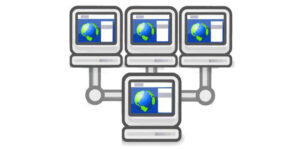
Telepresence Robots: The New Look of Telecommuting
A telepresence robot could change the way people telecommute. Here are a few reasons for the increase in popularity.

A telepresence robot could change the way people telecommute. Here are a few reasons for the increase in popularity.
There was a time when I used to dream about becoming a remote worker. The thought usually arose while stuck in rush hour traffic on
Technology has rapidly developed In the last twenty years.In the early days of the computer, people spent their work days battling dinosaur hardware while bitterly
How did you work 15 years ago? Chance are you were blissfully unaware of “crackberry” addiction, sorting through actual piles of paper resumes, and learning
These days, I work from home. Mostly. My “workspace” is upstairs in a special section of our master bedroom I call my corner office nook,
The balance of power is shifting in the employer/employee relationship. What does it mean for the future of work? The #TChat crowd weighs in
3 Honest Truths About This Profession If there’s a lesson to be learned about telecommuting, is that it’s not for everyone. And why should it
Working from the beach, conference calls from the pool, emailing from your back yard. All these ideal scenarios come to mind when people think of
The TalentCulture #TChat Show is back live on Wednesday, October 1, 2014, from 7-8 pm ET (4-5 pm PT). The #TChat radio portion runs the

Remote work is on a roll. But it takes more than home offices and an internet connection to succeed. What really matters? The TalentCulture community weighs in

Virtual teams make great business sense. But before you unleash your workforce, it pays to develop a coordinated technology plan.

Remote work isn’t a new concept — but its popularity is skyrocketing. What can employers do to ensure that virtual teams are truly successful?

Telecommuting success isn’t a slam dunk — but the business benefits can be significant. What should employers consider?

Under what conditions do you perform best? If something is standing between you and your work “zone” it’s time for a work/life fit reality check…

Statistics show that tapping into the flexible workforce is a smart business move. Why? This infographic illustrates 5 compelling reasons…

Flexible work: The concept is decades old, but technology and cultural changes are making alternative schedules and locations more viable. Take a closer look with #TChat